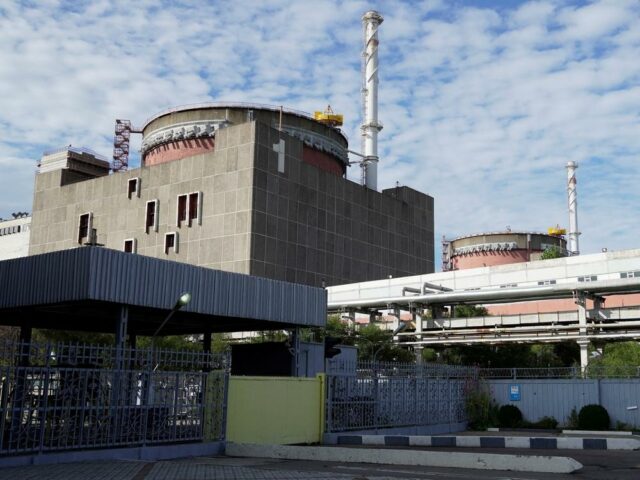
Ukraine’s Zaporizhzhia Nuclear Plant: A Case of Russian State Robbery (Part One)
Publication: Eurasia Daily Monitor Volume: 19 Issue: 175
By:

The Zaporizhzhia Nuclear Power Plant (ZNPP) is the most valuable economic asset that Russia has plundered from Ukraine during the present military invasion. The Russians captured this nuclear plant with armored forces that broke into the plant’s perimeter on March 4. Russian military and National Guard (Rozgvardiya) personnel are currently stationed at the plant.
Russia’s seizure of the ZNPP, however, does not qualify as a war capture, nor the plant as a war trophy since Moscow insists that this invasion does not constitute a war. And while the seizure looks as if “it goes with the territory” (annexation), Russia’s Rosatom State Atomic Energy Corporation (Rosatom) installed managers and personnel at the plant several months before Russia annexation of this Ukrainian territory. All told, this situation is a prima facie case of Russian state robbery of Ukraine on the largest possible scale, with the ZNPP’s fixed assets being valued at tens of billions of dollars.
On November 20 and 21, various buildings in the ZNPP’s perimeter were hit by artillery shells (a total of 25 shells, according to Russian Defense Ministry spokesman Igor Konashenkov), posing the risk of a nuclear accident or disaster. Moscow accuses Kyiv of having targeted the ZNPP deliberately, while Russian artillery purportedly “returned” fire (RIA Novosti, November 21). Kremlin spokesman Dmitry Peskov called on “all states of the world” to restrain Ukraine from shelling the nuclear plant (TASS, November 22). Moscow has not indicated a Ukrainian motive for allegedly playing with nuclear fire.
This accusation appears to be a replacement for Moscow’s exhausted claim that Ukraine was preparing to detonate a “dirty nuclear bomb.” The International Atomic Energy Agency (IAEA) debunked this claim on both November 3 and November 17, following inspections at multiple Ukrainian sites, including the three sites that Russia had designated as suspect (Iaea.org, November 3, 17). Rosatom Director General Alexey Likhachev, however, contends that the IAEA’s findings emboldened Ukraine to fire on the Zaporizhzhia nuclear plant, still without indicating a motive (TASS, November 22).
The ZNPP is ranked as the largest nuclear power plant in Europe in terms of electricity-generating capacity. Its six nuclear reactors (Soviet-design VVER-1000, pressurized light-water reactors fueled with Uranium-235) total six megawatts of installed capacity. Generating 40 billion to 42 billion kilowatts of electricity annually before the war, the ZNPP accounted for more than 20 percent of Ukraine’s total electricity output per year and almost one half of Ukraine‘s nuclear-generated electricity (Energoatom.com.ua; Npp.zp.ua, accessed November 20).
Located near the town of Enerhodar (home to the plant’s thousands of employees and their families), on the shore of the Kakhovka Reservoir of the Dnipro River, the ZNPP has ended up on the edge of a war zone and seems to have practically ceased producing electricity. It is still connected to Ukraine’s national electricity grid, but the connections are from time to time interrupted by artillery fire damaging the electricity transmission lines. This occurs both in the plant’s proximity and at distant locations along transmission lines that serve the ZNPP. Furthermore, shells sometimes fall near or inside the plant’s perimeter, causing some marginal physical damages but no human casualties or radioactive leaks as of yet (Iaea.org, November 10, 21).
IAEA Director General Rafael Grossi has led or otherwise supervised several agency inspection teams at Ukrainian nuclear power plants and other nuclear facilities since the war began. Based largely on those findings, the IAEA’s Board of Governors, on November 17, adopted a comprehensive resolution drafted by both Canada and Finland. The 35-nation board approved the resolution by a vote of 26 in favor, two against (Russia and China) and seven abstentions (Iaea.org, November 17). In its resolution, IAEA‘s board:
- “Expresses grave concern that the Russian Federation has not heeded the calls of the Board to immediately cease all actions against, and at, nuclear facilities in Ukraine, and requests that the Russian Federation do so immediately”;
- “Deplores and does not recognize the Russian Federation’s attempts to take ownership of Ukraine’s Zaporizhzhia Nuclear Power Plant and the attempted illegal annexation of the Ukrainian territory on which the plant is located, and calls upon the Russian Federation to immediately abandon its baseless claims of ownership of the plant”;
- “Welcom[es] the Director General’s assessment that the Agency has found no indication of undeclared nuclear activities or materials related to the development of radiological dispersal devices (“dirty bombs”) at three locations in Ukraine … in response to allegations made by the Russian Federation, thereby showing these allegations to be unfounded”;
- “Expresses grave concern with the unacceptable pressure and detentions of Ukrainian operating personnel at the ZNPP and the repeated disruption of external supply of [electrical] power following shelling in the surrounding area … significantly raising the risk of a nuclear accident or incident”;
- “Calls upon the Russian Federation to immediately withdraw its military and other personnel from the Zaporizhzhia Nuclear Power Plant, in order for the competent Ukrainian authorities to regain full control of the plant.”
Continuous fighting in the ZNPP’s vicinity entails risks of nuclear accidents and incidents, as well as physical damage. To prevent these risks, the IAEA supports Grossi’s initiative for a Nuclear Safety and Security Protection Zone to be created around the ZNPP (see Part Two).



